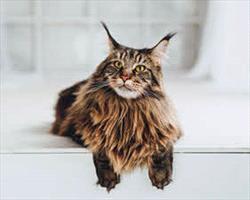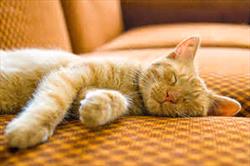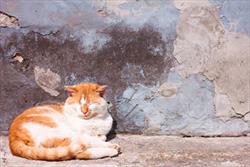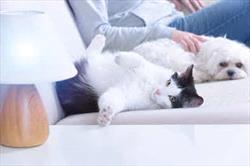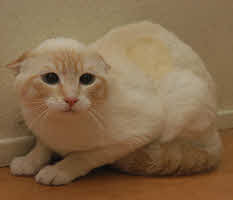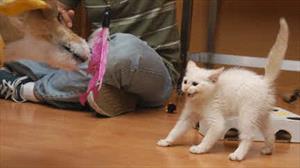One of the best things you can do to strengthen your relationship with your cat is to understand their body language. People communicate mainly in writing or speaking while cats use their body and sense of smell and touch. By understanding their language, we can improve our relationship with them and interpret relationships between cats within our home.
By observing your cat, you will see differences in body language by the positions of their body, tail, ears and eyes. The signals of all these body parts combine to give us a clear idea of what they are trying to say. Sometimes fearful cat body language, such as closing their eyes, hunching close to the ground and tucking their tail around them, may be an indication of pain. You should discuss any signs of anxiety, stress, or pain with your veterinarian.
Body Position
Examples of relaxed body language:
- Loose, stretching out on side
- Rolling on back comfortably
- Eyes blinking slowly, casually gazing or closed if sleeping
- Ears in a neutral position or forward if alert/attentive
- Tail in neutral relaxed position, tip might move slightly or upright in a question mark shape
|
The cat is lying down calmly and the body looks relaxed. The eyes are not dilated, and ears are erect indicating alertness and attentiveness. Photo Courtesy of VIN Images
|
The cat is stretched out, sleeping with closed eyes. Photo Courtesy of VIN Images
|
Examples of fearful body language:
- Tense
- Hunching to ground, trying to hide
- Eyes dilated in a light room or averted stare
- Closed eyes but faking sleep may indicate pain/stress
- Ears rotating backward or partially outward
- Tail curled around or under body
|
This cat may be sleeping and enjoying the sun because eyes are closed, ears are forward and erect, and the head is upright. However, the cat’s body looks slightly tense and not fully relaxed so faked sleep cannot be ruled out. The cat’s environment and situation should be considered as part of the picture. Photo Courtesy of AdobeStock Images
|
This cat is lying on their back with forward, erect ears indicating they are attentive and alert. The eyes are not dilated and the cat does not look tense. If we were able to see the tail, we might be better able to understand if the cat is calm or anxious. Most cats do not enjoy a belly rub. Photo courtesy of VIN Images.
|
Examples of increased fear with possible aggressive body language:
- Arched back with tail hair standing on end, possibly dilated pupils and pinned-back ears (“Halloween cat”)
- Eyes in a fixed stare
- Ears flattened to either side
- Tail twitching, lashing, or tail hairs standing on end
|
This cat is anxious and fearful. You can tell by the hunched down body and eyes in a fixed stare, pinned-back ears, and a tail tightly curled around the body with fur that is somewhat raised. Photo courtesy of CattleDog® Publishing
|
This cat’s body posture and body language are sometimes referred to as the “Halloween Cat.” Notice how the cat’s back is arched and hairs are standing on end. The cat may be hissing and ears are rotated outward and backward. This cat is fearful and may escalate to aggression. Photo courtesy of CattleDog® Publishing
|


